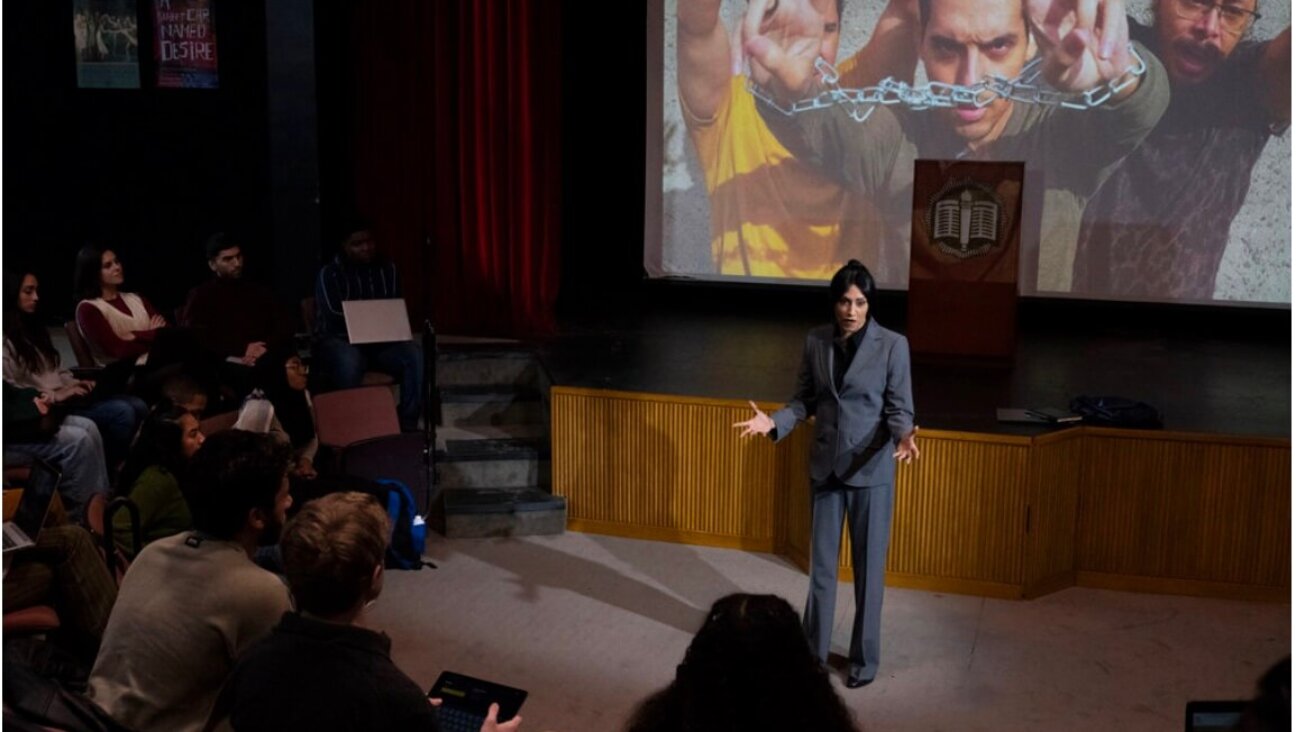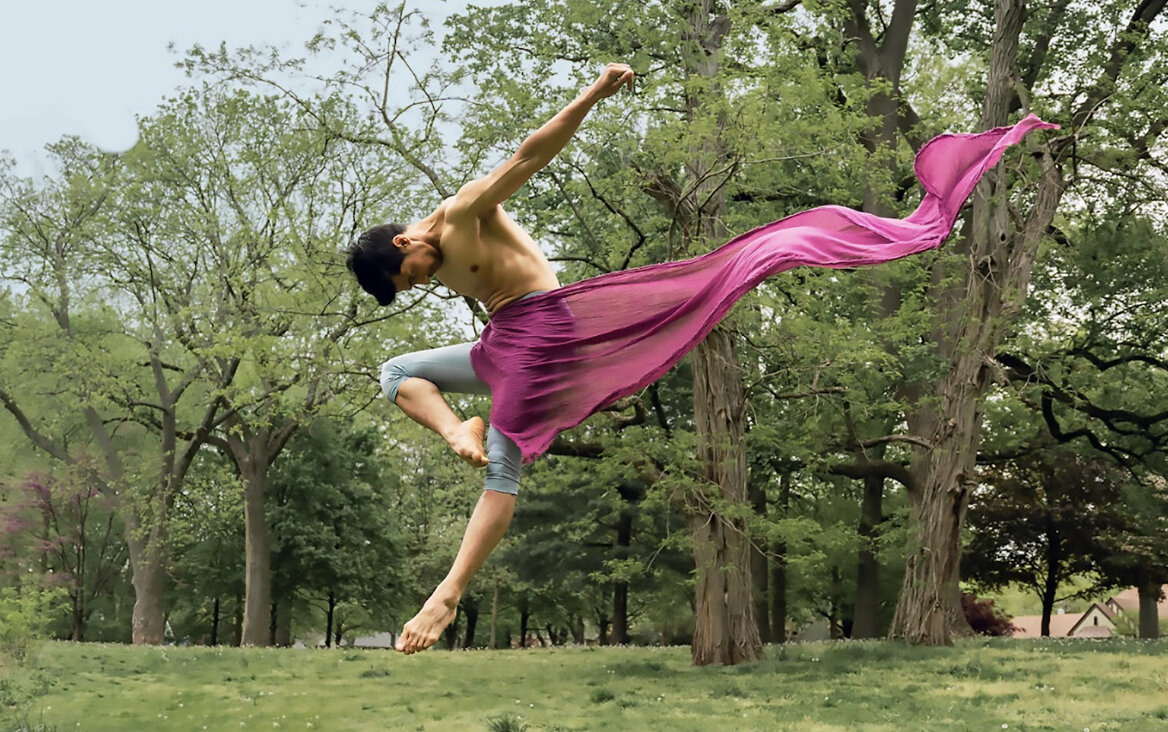The Kabbalah of Skiing

Spiritual Uplift: Religious education programs give outdoors enthusiasts something to think about while they?re on the chairlift. Image by Dani E. Go
It turns out that I’ve underestimated the spiritual importance of chairlifts.
Give people a Rorschach test with an Austria-shaped ink stain (a spoon tilted to the right with an oversized bowl and a short handle), and skiing is likely to be among the terms associated with my alpine native country. Every winter holiday while I was growing up, my family would fill several suitcases with thermal underwear and we would travel west, from the top right corner of the bowl, where Vienna is located, to the beginning of the handle, or mountainous Salzburg.
Never much of an athlete, I saw skiing as one of the few national duties I had to fulfill (watching “Sissi,” a three-part movie screened every Christmas on TV that offers a heavily romanticized depiction of the life of Austria’s former empress, played by Romy Schneider, was another one). But I always looked forward to the breaks. They came in the form of chairlift rides. Among my favorite activities on the 10-minute trip up the hill were: eating the chocolate my aunt had stuffed in the pockets of my skiing jacket, singing Beatles songs off-key with my cousins, and shouting ‘Mama’ or ‘Papa,’ and seeing if any of the people skiing on the slopes underneath me would reply.
It came as somewhat of a surprise when I recently learned that there are more constructive things to do on the chairlift — like learning about Judaism and strengthening my Jewish identity.
Joshua Segal, a skiing instructor and retired rabbi of Congregation Betenu in Amherst, N.H., offers a program called Ski Kabbalah. On the chairlift ride up, Segal gives his participants a task related to kabbalistic concepts, to be performed while skiing. He says that elements of the Tree of Life, the central mystical concept of Kabbalah, correspond with parts of the human body, and thus kabbalistic concepts such as balance could be directly translated into skiing.
“For example, if you were to take away one thing, what do you have to do to compensate?” he asked. I always dreaded when skiing instructors demanded that I go without sticks, but Segal told me that he only takes skiers who are able to meet these sorts of challenges anyway.
Segal is not the only one who offers spiritually enlightening alternatives to munching on half-frozen chocolate bars while dangling in midair. “Shabbat on Skis,” available at two ski resorts, Copper Mountain in Colorado, and Heavenly Mountain in California, is the brainchild of Jamie Korngold, also known as the “Adventure Rabbi” and the author of several books, including “God in the Wilderness” published by Random House in 2008.
She meets with her participants once a month on a Saturday morning, skis with them for two hours, and then leads a 15-minute service in a “beautiful little shelter” at noon.
“I try to give people something to think about on the chairlift,” Korngold, who lives in Boulder, said. “Sometimes it’s the idea of how to make this day, Shabbat, different from yesterday.”
Outdoor Jewish spiritual programs that that involve winter sports such as skiing, snowshoeing, or even dog sledding, have been proliferating in the United States since the early 2000s. Numerous organizations offer activities all year round — from bike rides and urban gardening to summer camps and farming fellowships — that aim at making the outdoors experience a meaningful Jewish one.
Hazon, a Jewish environmental organization that offers financial and educational resources to smaller programs and organizes its own outdoor programs, is currently working on a report on what it terms Jewish Outdoor, Food and Environmental Education, scheduled for release by the end of March 2014.
“Jewish tradition often comes alive when you get outdoors — in a way that it can’t do indoors,” said Nigel Savage, the organization’s founder and president.
Everyone feels awe and wonder in wilderness,” said Rabbi Mike Comins, founder of the TorahTrek Spiritual Wilderness Adventures and author of 2001’s “Wild Faith.” His retreats include meditating, chanting and learning Torah near the Joshua Tree National Park in California. “The issue of God is not contrived or irrelevant. People are feeling transcendence and questions arise naturally.”
This made sense to me because I have always been encouraged to spend time outdoors (“but take a sweater!”), even though it was perhaps not so much to ask more questions, but fewer of them (“if you want to make a noise, go play in the garden”). I would comply because I had the secret hope that my own body worked a bit like a plant (the more fresh air and sunlight and rain, the more I’d grow). My hopes were brutally crushed when my growth halted after I reached five feet.
But a study issued by the Foundation for Jewish Camp in 2011 showed that the Jewish people are actually a bit like plants: Summer camp alumni are much more likely to have a strong Jewish identity (expressed, for example, by going to synagogue at least once a month, or feeling emotionally attached to Israel) than those who haven’t been to camps as children. Being outdoors, it seems, can turn them into more active Jews.
But Gabe Goldman, the director of experiential education and J-SITE at the Agency for Jewish Learning in Pittsburgh, warned me that it wasn’t that simple. “[Some people] think it’s just by taking a group outside, just by osmosis, the learning takes place,” he said. “It requires that you know everything about conventional education, and then apply it.” Otherwise, he added, “all that happens is they have a great time, but nothing transcends the moment they are having the experience.”
This sounded fine to me — except for one conclusion I had to draw from Goldman’s statement: What about the cliché of the unathletic, bookish Jew I used to comfort myself with, when, year after year, sports was the worst mark in my school report card? “That’s goyishe nakhes,” my mother would occasionally say, when I complained at my family’s dinner table about my inadequacy when it came to climbing a rope, throwing a ball with aim, or doing anything on a horizontal bar except for falling from it.
It turns out that sports are not only good for us, they are also part of our tradition. “The Jewish people didn’t enter human history in a synagogue or day school. We entered human history in the relationship to the physical world,” said Savage.
And Steven Riess, a historian and author of “Sports and the American Jew,” told me that I was 100 years late in relying on that stereotype, because Zionism and the state of Israel significantly weakened it. “The Israel Defense Force has cut down a lot of the stereotype of the weak Jews,” he said. “They are tough fighters and soldiers.”
Still, there was some comfort for my preference of sitting in the chairlift over swinging down the slopes: Judaism doesn’t have a strong tradition of skiing, at least on the professional level, explained Riess, because Jews rarely lived near skiing areas, such as Vermont, New Hampshire or Lake Tahoe.
Plus, said Savage: “I don’t think the Torah says anything about skiing.”
Anna Goldenberg is the Forward’s arts and culture intern. Her work has appeared in Die Zeit, among other publications.

I hope you appreciated this article. Before you go, I’d like to ask you to please support the Forward’s award-winning journalism this Passover.
In this age of misinformation, our work is needed like never before. We report on the news that matters most to American Jews, driven by truth, not ideology.
At a time when newsrooms are closing or cutting back, the Forward has removed its paywall. That means for the first time in our 126-year history, Forward journalism is free to everyone, everywhere. With an ongoing war, rising antisemitism, and a flood of disinformation that may affect the upcoming election, we believe that free and open access to Jewish journalism is imperative.
Readers like you make it all possible. Right now, we’re in the middle of our Passover Pledge Drive and we still need 300 people to step up and make a gift to sustain our trustworthy, independent journalism.
Make a gift of any size and become a Forward member today. You’ll support our mission to tell the American Jewish story fully and fairly.
— Rachel Fishman Feddersen, Publisher and CEO
Join our mission to tell the Jewish story fully and fairly.
Only 300 more gifts needed by April 30

























